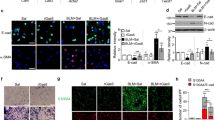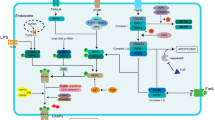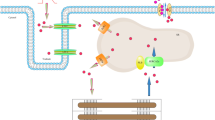Abstract
Survivin belongs to the family of genes known as inhibitors of apoptosis, and although it has been implicated in the prevention of cancer, its potential role in burn-induced cardiac injury is unknown. In this study, we investigated the effects of survivin blockade on burn-induced cardiac apoptosis. Using a standardized Sprague-Dawley rat model of third-degree burn injury over 40% of total body surface area, apoptosis was measured in vivo followed by in vitro assessment of burn serum-stimulated cardiomyocytes. Based on the Western blot analyses, real-time PCR, ELISA, and TUNEL, apoptosis and caspase activation both in vivo and in vitro were significantly increased after severe burn injury, while survivin expression was increased (up to 2.90-fold) during the early stage of burn injury and was almost completely abolished 8 h after the burn. Survivin-deficient cardiomyocytes, as well as hearts from rats treated with the survivin inhibitor YM155, exhibited increased caspase-3 protein and mRNA expression and apoptosis ratio at different times after the burn. Furthermore, inhibition of ERK, phosphoinositol 3-kinase contributed the burn serum-induced increase in apoptosis and caspase-3 protein expression, and decreased survivin expression, whereas burn serum-induced increase in apoptosis was attenuated by P38 mitogen-activated protein kinase inhibition. These data identify survivin as a critical anti-apoptotic regulator of cardiomyocytes after burn injury. ERK, P38 MAPK and PI3K were found to be upstream regulators of survivin.






Similar content being viewed by others
References
Abbate A, Scarpa S, Santini D, Palleiro J, Vasaturo F, Miller J, Morales C, Vetrovec GW, Baldi A (2006) Myocardial expression of survivin, an apoptosis inhibitor, in aging and heart failure. An experimental study in the spontaneously hypertensive rat. Int J Cardiol 111:371–376. doi:10.1016/j.ijcard.2005.07.061
Adams HR, Baxter CR, Izenberg SD (1984) Decreased contractility and compliance of the left ventricle as complications of thermal trauma. Am Heart J 108:1477–1487. doi:10.1016/0002-8703(84)90695-1
Aikawa N, Martyn JA, Burke JF (1978) Pulmonary artery catheterization and thermodilution cardiac output determination in the management of critically burned patients. Am J Surg 135:811–817
Altieri DC (2003) Survivin, versatile modulation of cell division and apoptosis in cancer. Oncogene 22:8581–8589. doi:10.1038/sj.onc.1207113
Ambrosini G, Adida C, Altieri DC (1997) A novel anti-apoptosis gene, survivin, expressed in cancer and lymphoma. Nat Med 3:917–921. doi:10.1038/nm0897-917
Baxter CR, Cook WA, Shires GT (1966) Serum myocardial depressant factor of burn shock. Surg Forum 17:1–2
Blanc-Brude OP, Yu J, Simosa H, Conte MS, Sessa WC, Altieri DC (2002) Inhibitor of apoptosis protein survivin regulates vascular injury. Nat Med 8:987–994. doi:10.1038/nm750
Cao W, Li XQ, Zhang XN, Hou Y, Zeng AG, Xie YH, Wang SW (2010) Madecassoside suppresses LPS-induced TNF-alpha production in cardiomyocytes through inhibition of ERK, p38, and NF-kappaB activity. Int Immunopharmacol 10:723–729. doi:10.1016/j.intimp.2010.03.015
Carlson DL, Horton JW (2006) Cardiac molecular signaling after burn trauma. J Burn Care Res 27:669–675. doi:10.1097/01.BCR.0000237955.28090.41
Carlson DL, Lightfoot E Jr, Bryant DD, Haudek SB, Maass D, Horton J, Giroir BP (2002) Burn plasma mediates cardiac myocyte apoptosis via endotoxin. Am J Physiol Heart Circ Physiol 282:H1907–H1914. doi:10.1152/ajpheart.00393.2001
Chung KK, Wolf SE, Cancio LC, Alvarado R, Jones JA, McCorcle J, King BT, Barillo DJ, Renz EM, Blackbourne LH (2009) Resuscitation of severely burned military casualties: fluid begets more fluid. J Trauma 67:231–237. doi:10.1097/TA.0b013e3181ac68cf
Correia-Pinto J, Henriques-Coelho T, Roncon-Albuquerque R Jr, Lourenco AP, Melo-Rocha G, Vasques-Novoa F, Gillebert TC, Leite-Moreira AF (2009) Time course and mechanisms of left ventricular systolic and diastolic dysfunction in monocrotaline-induced pulmonary hypertension. Basic Res Cardiol 104:535–545. doi:10.1007/s00395-009-0017-3
Ebermann L, Piper C, Kuhl U, Klingel K, Schlattner U, Siafarikas N, Zeichhardt H, Schultheiss HP, Dorner A (2009) Impact of myocardial inflammation on cytosolic and mitochondrial creatine kinase activity and expression. Basic Res Cardiol 104:247–257. doi:10.1007/s00395-008-0773-5
Fan L, Lin C, Zhuo S, Chen L, Liu N, Luo Y, Fang J, Huang Z, Lin Y, Chen J (2009) Transplantation with survivin-engineered mesenchymal stem cells results in better prognosis in a rat model of myocardial infarction. Eur J Heart Fail 11:1023–1030. doi:10.1093/eurjhf/hfp135
Finnerty CC, Herndon DN, Przkora R, Pereira CT, Oliveira HM, Queiroz DM, Rocha AM, Jeschke MG (2006) Cytokine expression profile over time in severely burned pediatric patients. Shock 26:13–19
Fischer P, Hilfiker-Kleiner D (2007) Survival pathways in hypertrophy and heart failure: the gp130-STAT3 axis. Basic Res Cardiol 102:279–297. doi:10.1007/s00395-007-0674-z
Fukuda S, Kaga S, Sasaki H, Zhan L, Zhu L, Otani H, Kalfin R, Das DK, Maulik N (2004) Angiogenic signal triggered by ischemic stress induces myocardial repair in rat during chronic infarction. J Mol Cell Cardiol 36:547–559. doi:10.1016/j.yjmcc.2004.02.002
Gamelli RL, George M, Sharp-Pucci M, Dries DJ, Radisavljevic Z (1995) Burn-induced nitric oxide release in humans. J Trauma 39:869–877
Gauglitz GG, Song J, Herndon DN, Finnerty CC, Boehning D, Barral JM, Jeschke MG (2008) Characterization of the inflammatory response during acute and post-acute phases after severe burn. Shock 30:503–507. doi:10.1097/SHK.0b013e31816e3373
Giroir BP, Horton JW, White DJ, McIntyre KL, Lin CQ (1994) Inhibition of tumor necrosis factor prevents myocardial dysfunction during burn shock. Am J Physiol 267:H118–H124
Hedayat M, Mahmoudi MJ, Rose NR, Rezaei N (2010) Proinflammatory cytokines in heart failure: double-edged swords. Heart Fail Rev 15:543–562. doi:10.1007/s10741-010-9168-4
Horton JW (1996) Cellular basis for burn-mediated cardiac dysfunction in adult rabbits. Am J Physiol 271:H2615–H2621
Horton JW (2004) Left ventricular contractile dysfunction as a complication of thermal injury. Shock 22:495–507. doi:10.1097/01.shk.0000145205.51682.c3
Horton JW, Maass DL, White DJ, Sanders B, Murphy J (2004) Effects of burn serum on myocardial inflammation and function. Shock 22:438–445
Hu Z, Sayeed MM (2005) Activation of PI3-kinase/PKB contributes to delay in neutrophil apoptosis after thermal injury. Am J Physiol Cell Physiol 288:C1171–C1178. doi:10.1152/ajpcell.00312.2004
Huang YS, Yang ZC, Yan BG, Yang JM, Chen FM, Crowther RS, Li A (1999) Pathogenesis of early cardiac myocyte damage after severe burns. J Trauma 46:428–432
Huribal M, Cunningham ME, D’Aiuto ML, Pleban WE, McMillen MA (1995) Endothelin-1 and prostaglandin E2 levels increase in patients with burns. J Am Coll Surg 180:318–322
Indolfi C, Gasparri C, Vicinanza C, De Serio D, Boncompagni D, Mongiardo A, Spaccarotella C, Agosti V, Torella D, Curcio A (2011) Mitogen-activated protein kinases activation in T lymphocytes of patients with acute coronary syndromes. Basic Res Cardiol 106:667–679. doi:10.1007/s00395-011-0172-1
Janicke RU, Sprengart ML, Wati MR, Porter AG (1998) Caspase-3 is required for DNA fragmentation and morphological changes associated with apoptosis. J Biol Chem 273:9357–9360. doi:10.1074/jbc.273.16.9357
Jankowski M, Bissonauth V, Gao L, Gangal M, Wang D, Danalache B, Wang Y, Stoyanova E, Cloutier G, Blaise G, Gutkowska J (2010) Anti-inflammatory effect of oxytocin in rat myocardial infarction. Basic Res Cardiol 105:205–218. doi:10.1007/s00395-009-0076-5
Kleinbongard P, Heusch G, Schulz R (2010) TNFalpha in atherosclerosis, myocardial ischemia/reperfusion and heart failure. Pharmacol Ther 127:295–314. doi:10.1016/j.pharmthera.2010.05.002
Lang CH, Frost RA, Vary TC (2004) Thermal injury impairs cardiac protein synthesis and is associated with alterations in translation initiation. Am J Physiol Regul Integr Comp Physiol 286:R740–R750. doi:10.1152/ajpregu.00661.2003
Levkau B (2011) Survivin signalling in the heart. J Mol Cell Cardiol 50:6–8. doi:10.1016/j.yjmcc.2010.10.013
Levkau B, Schafers M, Wohlschlaeger J, von Wnuck Lipinski K, Keul P, Hermann S, Kawaguchi N, Kirchhof P, Fabritz L, Stypmann J, Stegger L, Flogel U, Schrader J, Fischer JW, Hsieh P, Ou YL, Mehrhof F, Tiemann K, Ghanem A, Matus M, Neumann J, Heusch G, Schmid KW, Conway EM, Baba HA (2008) Survivin determines cardiac function by controlling total cardiomyocyte number. Circulation 117:1583–1593. doi:10.1161/CIRCULATIONAHA.107.734160
Li XQ, Cao W, Li T, Zeng AG, Hao LL, Zhang XN, Mei QB (2009) Amlodipine inhibits TNF-alpha production and attenuates cardiac dysfunction induced by lipopolysaccharide involving PI3K/Akt pathway. Int Immunopharmacol 9:1032–1041. doi:10.1016/j.intimp.2009.04.010
Luo X, Deng J, Liu N, Zhang C, Huang Q, Liu J (2011) Cellular mechanism underlying burn serum-generated bidirectional regulation of excitation-contraction coupling in isolated rat cardiomyocytes. Shock 35:388–395. doi:10.1097/SHK.0b013e3182000379
Lupia E, Spatola T, Cuccurullo A, Bosco O, Mariano F, Pucci A, Ramella R, Alloatti G, Montrucchio G (2010) Thrombopoietin modulates cardiac contractility in vitro and contributes to myocardial depressing activity of septic shock serum. Basic Res Cardiol 105:609–620. doi:10.1007/s00395-010-0103-6
Maass DL, Hybki DP, White J, Horton JW (2002) The time course of cardiac NF-kappaB activation and TNF-alpha secretion by cardiac myocytes after burn injury: contribution to burn-related cardiac contractile dysfunction. Shock 17:293–299
Martyn JA, Snider MT, Szyfelbein SK, Burke JF, Laver MB (1980) Right ventricular dysfunction in acute thermal injury. Ann Surg 191:330–335
Michel MC, Li Y, Heusch G (2001) Mitogen-activated protein kinases in the heart. Naunyn Schmiedebergs Arch Pharmacol 363:245–266. doi:10.1007/s002100000363
Miki T, Miura T, Tanno M, Nishihara M, Naitoh K, Sato T, Takahashi A, Shimamoto K (2007) Impairment of cardioprotective PI3K–Akt signaling by post-infarct ventricular remodeling is compensated by an ERK-mediated pathway. Basic Res Cardiol 102:163–170. doi:10.1007/s00395-006-0622-3
Oppeltz RF, Zhang Q, Rani M, Sasaki JR, Schwacha MG (2010) Increased expression of cardiac IL-17 after burn. J Inflamm (Lond) 7:38. doi:10.1186/1476-9255-7-38
Pereira CT, Barrow RE, Sterns AM, Hawkins HK, Kimbrough CW, Jeschke MG, Lee JO, Sanford AP, Herndon DN (2006) Age-dependent differences in survival after severe burns: a unicentric review of 1, 674 patients and 179 autopsies over 15 years. J Am Coll Surg 202:536–548. doi:10.1016/j.jamcollsurg.2005.11.002
Pfister R, Acksteiner C, Baumgarth J, Burst V, Geissler HJ, Margulies KB, Houser S, Bloch W, Flesch M (2007) Loss of beta1D-integrin function in human ischemic cardiomyopathy. Basic Res Cardiol 102:257–264. doi:10.1007/s00395-006-0640-1
Ramzy PI, Barret JP, Herndon DN (1999) Thermal injury. Crit Care Clin 15:333–352
Ryoke T, Gu Y, Ikeda Y, Martone ME, Oh SS, Jeon ES, Knowlton KU, Ross J Jr (2002) Apoptosis and oncosis in the early progression of left ventricular dysfunction in the cardiomyopathic hamster. Basic Res Cardiol 97:65–75
Santini D, Abbate A, Scarpa S, Vasaturo F, Biondi-Zoccai GG, Bussani R, De Giorgio F, Bassan F, Camilot D, Di Marino MP, Feroce F, Baldi F, Silvestri F, Crea F, Baldi A (2004) Surviving acute myocardial infarction: survivin expression in viable cardiomyocytes after infarction. J Clin Pathol 57:1321–1324. doi:10.1136/jcp.2004.018986
Skyschally A, van Caster P, Boengler K, Gres P, Musiolik J, Schilawa D, Schulz R, Heusch G (2009) Ischemic postconditioning in pigs: no causal role for RISK activation. Circ Res 104:15–18. doi:10.1161/CIRCRESAHA.108.186429
Subramanian V, Krishnamurthy P, Singh K, Singh M (2007) Lack of osteopontin improves cardiac function in streptozotocin-induced diabetic mice. Am J Physiol Heart Circ Physiol 292:H673–H683. doi:10.1152/ajpheart.00569.2006
Tan J, Maass DL, White DJ, Horton JW (2007) Effects of burn injury on myocardial signaling and cytokine secretion: possible role of PKC. Am J Physiol Regul Integr Comp Physiol 292:R887–R896. doi:10.1152/ajpregu.00555.2006
Toker A, Cantley LC (1997) Signalling through the lipid products of phosphoinositide-3-OH kinase. Nature 387:673–676. doi:10.1038/42648
Venkatesan B, Prabhu SD, Venkatachalam K, Mummidi S, Valente AJ, Clark RA, Delafontaine P, Chandrasekar B (2010) WNT1-inducible signaling pathway protein-1 activates diverse cell survival pathways and blocks doxorubicin-induced cardiomyocyte death. Cell Signal 22:809–820. doi:10.1016/j.cellsig.2010.01.005
Vindenes H, Ulvestad E, Bjerknes R (1995) Increased levels of circulating interleukin-8 in patients with large burns: relation to burn size and sepsis. J Trauma 39:635–640
Wohlschlaeger J, Meier B, Schmitz KJ, Takeda A, Takeda N, Vahlhaus C, Levkau B, Stypmann J, Schmid C, Werner Schmid K, Baba HA (2010) Cardiomyocyte survivin protein expression is associated with cell size and DNA content in the failing human heart and is reversibly regulated after ventricular unloading. J Heart Lung Transplant 29:1286–1292. doi:10.1016/j.healun.2010.06.015
Yao LL, Wang YG, Cai WJ, Yao T, Zhu YC (2007) Survivin mediates the anti-apoptotic effect of delta-opioid receptor stimulation in cardiomyocytes. J Cell Sci 120:895–907. doi:10.1242/jcs.03393
Zang QS, Maass DL, Wigginton JG, Barber RC, Martinez B, Idris AH, Horton JW, Nwariaku FE (2010) Burn serum causes a CD14-dependent mitochondrial damage in primary cardiomyocytes. Am J Physiol Heart Circ Physiol 298:H1951–H1958. doi:10.1152/ajpheart.00927.2009
Acknowledgments
This work was supported by the Grant from the National Natural Science Foundation of China (30800433 to X.Q. Li) and Science and Technology Innovation Project of Shaanxi Province in China (2010K01-177 to S.W. Wang).
Conflict of interest
The authors declare that they have no conflict of interest.
Author information
Authors and Affiliations
Corresponding authors
Electronic supplementary material
Below is the link to the electronic supplementary material.
395_2011_199_MOESM1_ESM.tif
Supplementary Fig. 1 Induced survivin expression in the cardiac sections after burn injury. Survivin protein expression in the heart tissues at 0 - 8 h after burn injury was visualized by immunohistochemistry. Figures are representative of two separate and independent experiments. (TIFF 10856 kb)
395_2011_199_MOESM2_ESM.tif
Supplementary Fig. 2 The effect of sham serum on cardiomyocyte apoptosis and survivin expression. Neonatal rat cardiomyocytes were treated with sham serum for various periods of time, as indicated. a The extent of DNA fragmentation was quantified using ELISA (N=6). b Survivin and cleaved caspase-3 levels were measured by Western blot analysis. A typical display is depicted (upper panel) along with the statistical analysis of the changes of the protein (lower panel). Data are expressed as mean±S.E. (N = 3). (TIFF 12916 kb)
395_2011_199_MOESM3_ESM.tif
Supplementary Fig. 3 The effect of burn injury on P38 MAPK, JNK, ERK and Akt phosphorylation in the cardiac sections. The rats were exposed to a 40% TBSA burn (burn injury) or 25°C water (sham). The p-ERK1/2, p-P38, p-JNK and p-Akt levels at 0, 0.5, 1, 2, 4, 6, and 8 h after burn injury were measured by Western blot analysis. a The blots are representative of five rats. b The statistical analysis of the changes of the protein. Data are expressed as mean±SE *P < 0.05 vs. 0 h (TIFF 6949 kb).
395_2011_199_MOESM4_ESM.tif
Supplementary Fig. 4 The effect of sham serum on the expression of six cytokines commonly used to evaluate the inflammatory response. The levels of IL-1β, IL-6, IL-10, IL-12, TNF- α and CINC-1 were determined by ELISA according to the protocol of the manufacturer. Data are expressed as mean±S.E. (N=5, *P < 0.05 vs. time-matched control). (TIFF 10772 kb)
Rights and permissions
About this article
Cite this article
Cao, W., Xie, YH., Li, XQ. et al. Burn-induced apoptosis of cardiomyocytes is survivin dependent and regulated by PI3K/Akt, p38 MAPK and ERK pathways. Basic Res Cardiol 106, 1207–1220 (2011). https://doi.org/10.1007/s00395-011-0199-3
Received:
Revised:
Accepted:
Published:
Issue Date:
DOI: https://doi.org/10.1007/s00395-011-0199-3




